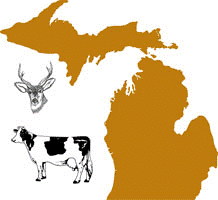Wildlife Disease and Zoonotics
Date of this Version
2010
Abstract
Interest in the epidemiology of emerging diseases of humans and livestock as they relate to wildlife has increased greatly over the past several decades. Many factors, most anthropogenic, have facilitated the emergence of diseases from wildlife. Some livestock diseases have ‘‘spilled over’’ to wildlife and then ‘‘spilled back’’ to livestock. When a population is exposed to an infectious agent, depending on an interaction of factors involving the host, agent, and environment, the population may be resistant to infection or may become a dead-end host, a spillover host, or a maintenance host. Each exposure is unique; the same species of host and agent may respond differently in different situations. Management actions that affect the environment and behavior of a potential host animal may allow the emergence of a new or as yet undetected disease. There are many barriers in preventing, detecting, monitoring and managing wildlife diseases. These may include political and legal hurdles, lack of knowledge about many diseases of wildlife, the absence of basic data on wildlife populations, difficulties with surveillance, and logistical constraints. Increasing interaction between wildlife and humans or domestic animals may lead to disease emergence and require innovative methods and strategies for disease surveillance and management in wildlife.


Comments
Published in Veterinary Pathology 47(1) 34-39.